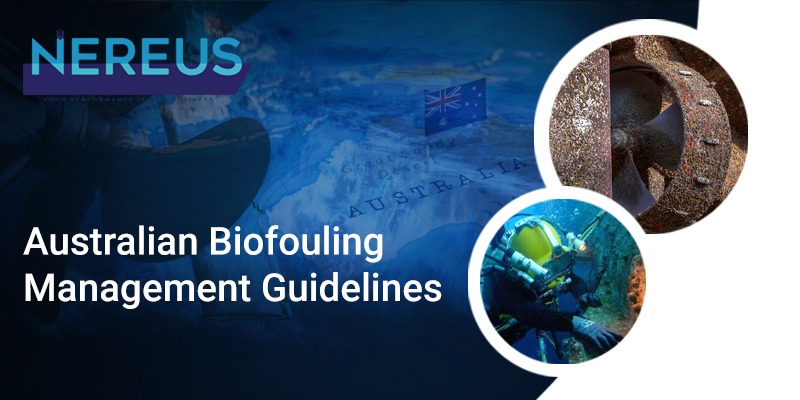Marine pests can have significant impacts on the marine environment, human health and the economy. Such impacts include the destruction of marine habitats and adverse effects on tourism, fishing, marine industries and coastal values.
As per the new guidelines set by the Australian government which was effective from June 2022, all vessels that enter or intend to enter the Australian territory are required to submit a report based on the biofouling management and the voyage history of the vessel in the past 12 months.
Generally, marine pests are known to be introduced and translocated in a variety of ways some being through ballast water from commercial vessels, biofouling, aquaculture operations, and aquarium imports.
To tackle this issue voluntary national biofouling management guidelines have been developed to address biofouling risks from a range of sectors. These guidelines will provide management measures to prevent new marine pests introduced into the marine environment and prevent their translocation.
Effects Of Biofouling
- Marine pests can block water intake pipes
- create vessel drag and reduce fuel efficiency and performance
- increase downtime
- Additional hull cleaning and treatment costs
- shorten the life of the vessel.
Manage Biofouling By
- Ensuring your vessel has an appropriate in-service anti-fouling coating.
- Use of Anti Fouling systems such as anodes, and ICCP systems.
- Regular Inspection and Cleaning of submerged sections either in drydock or while afloat.
- Checking niche areas and flushing internal seawater systems.
Guidelines For Inspecting Vessels Arriving in Australia
National biofouling management guidelines have been developed for the recreational vessel and commercial fishing vessel sectors. Similar documents have also been developed for non-trading vessels and the petroleum production and exploration industry. These can all be found on the official Marine Pests website.
The vessels encompassed by these guidelines are primarily commercial trading ships, which include bulk carriers, container vessels, oil and gas tankers, livestock carriers and general cargo ships. However, cruise vessels and other passenger ships are also included because their size, operational activity and maintenance regimes are similar to commercial trading ships.
These guidelines do not include non-trading vessels involved in commercial activities such as barges, heavy lift vessels, cable ships, and tugs. This sector is encompassed by the Biofouling management guidelines for non-trading vessels. Similarly, these guidelines do not include vessels associated with the petroleum industry such as offshore support vessels. This sector is encompassed in the Biofouling management guidelines for the petroleum production and exploration industry.
Some of the key guidelines are:
Minimize the risk and translocation of marine pests in Australia’s Marine Environment through
- Reporting suspected marine pests
- Effective Hull Antifouling coating
- Sea chests and sea inlet pipes should be painted with an antifouling paint system
- Painted Hull appendages and niche areas (Rudder, Bow & Stern thrusters, Bilge Keels, etc)
- Effective Marine Growth Prevention System (MGPS) fitted to internal seawater systems
- In-water Cleaning (Propeller Polishing & Hull Cleaning)
In-water cleaning must be undertaken in accordance with the Australian government’s requirements and permission to undertake the in-water cleaning must be granted by the relevant state/territory authority
Ship operators may receive fewer physical inspections for biofouling if they comply with one of the following three accepted biofouling management practices:
- Implementation of an effective biofouling management plan; or
- Cleaned all biofouling within 30 days prior to arriving in Australian territory; or
- Implementation of an alternative biofouling management method pre-approved by the department.
Nereus Subsea has an excellent track record of carrying out hull cleaning exceeding Australian and New Zealand requirements.
We will deliver everything you need to ensure your vessel stays compliant with international regulations when entering Australian waters.
For further details, it is advised to visit the Australian Government’s Marine Pests official website. More information on the same can be found in the following reference links:
- Mandatory biofouling requirements in Australia
- Australian commercial vessel biofouling guidelines
- Maritime Arrivals Reporting Scheme (MARS)
- National Biofouling Management Guidelines

